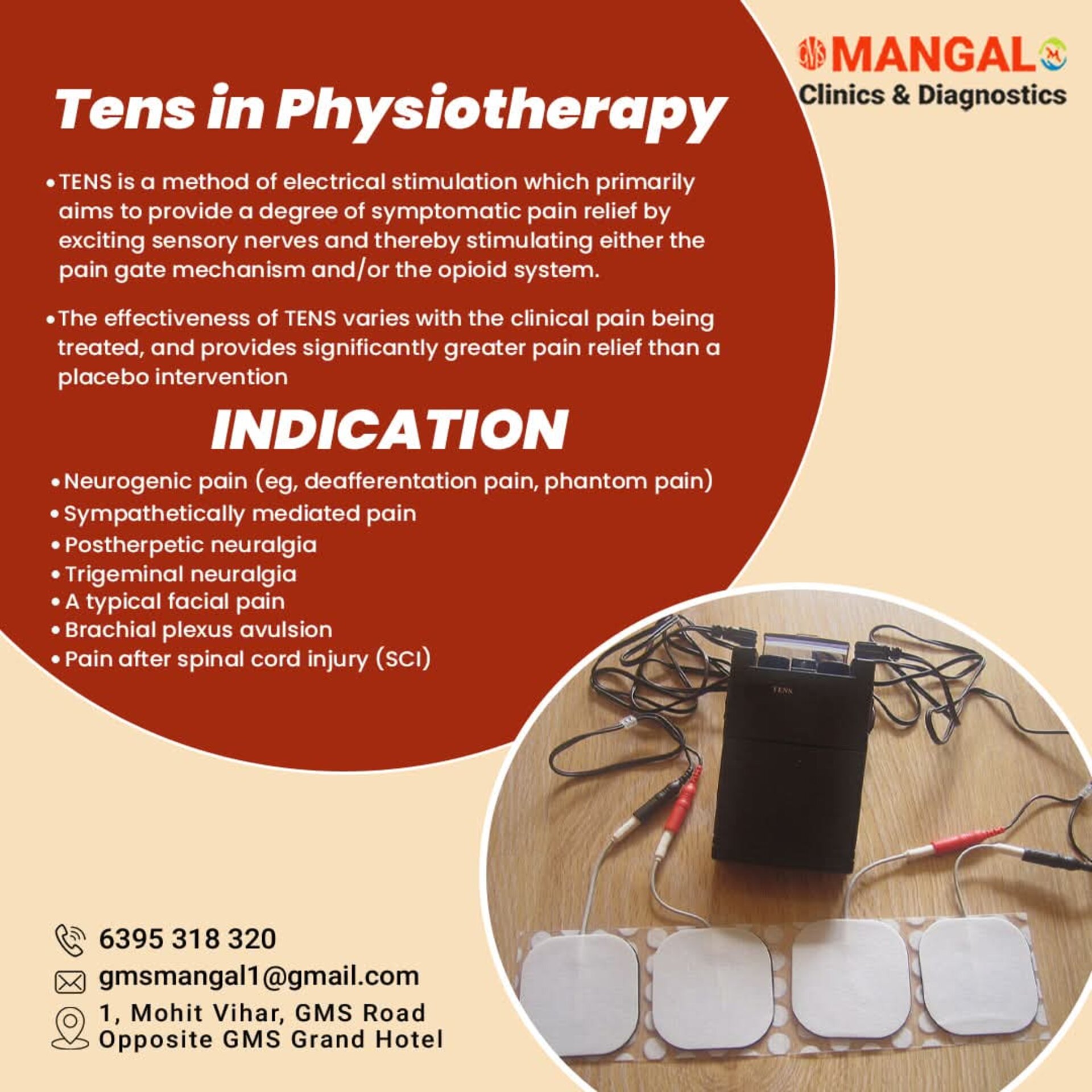Pain, whether acute or chronic, can significantly impact daily life. While there are several treatment methods available, Transcutaneous Electrical Nerve Stimulation (TENS) has become one of the most popular non-invasive techniques for managing pain. Dr. Deepti Agarwal, a leading radiologist based in Dehradun, highlights the importance of TENS as an effective pain-relieving solution in physiotherapy.
What is TENS?
Transcutaneous Electrical Nerve Stimulation (TENS) is a method of electrical stimulation that targets sensory nerves through the skin. The technique involves applying low-voltage electrical pulses via electrodes placed on the skin, which stimulate the nerves underneath. This electrical stimulation can activate the body’s natural pain control mechanisms, including the pain gate mechanism and the opioid system, both of which can reduce the perception of pain.
The main benefit of TENS is its ability to provide symptomatic pain relief without the need for medications, which makes it a desirable option for many patients. TENS is often used in physiotherapy to treat various types of pain and is considered an excellent alternative for those looking for non-pharmacological pain management.
How Does TENS Work?
TENS works by delivering electrical pulses to the body’s sensory nerves. These pulses can either block pain signals from reaching the brain or trigger the release of endorphins, which are the body’s natural pain-relieving chemicals. By stimulating the pain gate mechanism, TENS effectively reduces the sensation of pain.
Patients experience a tingling or buzzing sensation beneath the electrodes, which is typically not painful. This sensation is a sign that the nerves are being stimulated, and for many, it provides significant pain relief. The effects are often rapid and can be felt immediately after the treatment begins.
Indications for TENS
TENS has proven to be effective in treating a variety of pain conditions. Dr. Deepti Agarwal notes that TENS can be particularly beneficial for the following types of pain:
Neurogenic Pain
This includes pain caused by nerve damage or dysfunction, such as deafferentation pain or phantom limb pain.
Sympathetically Mediated Pain
Conditions like Complex Regional Pain Syndrome (CRPS) and post-surgical pain can often respond well to TENS therapy.
Postherpetic Neuralgia
This is a complication following shingles that causes persistent nerve pain in the affected area. TENS can help manage this discomfort effectively.
Trigeminal Neuralgia
This disorder causes severe facial pain, often triggered by touch or movement. TENS therapy can help alleviate some of the intense pain associated with this condition.
Atypical Facial Pain
Similar to trigeminal neuralgia, atypical facial pain can be treated using TENS to reduce discomfort and improve quality of life.
Brachial Plexus Avulsion
TENS is also beneficial for managing pain caused by nerve injury in the brachial plexus, a network of nerves that controls the arm and hand.
Pain After Spinal Cord Injury (SCI)
Spinal cord injuries often result in chronic pain, which can be alleviated to some extent using TENS therapy.
Benefits of TENS
TENS therapy offers several advantages for patients dealing with chronic or acute pain:
Non-Invasive: TENS does not require surgery or injections, making it a non-invasive treatment option.
Minimal Side Effects: Unlike medications, TENS has very few side effects. There is no risk of overdose, and it does not interact with other medications.
Self-Administered: Many TENS units are portable and easy to use at home, allowing patients to manage their pain independently and on their own schedule.
Cost-Effective: Compared to long-term drug therapies, TENS is relatively inexpensive and provides an affordable option for pain management.
Rapid Relief: The effects of TENS are usually felt quickly, providing almost immediate pain relief that can be used throughout the day as needed.
How TENS is Used in Physiotherapy
In physiotherapy, TENS is often used as part of a comprehensive treatment plan for managing pain and promoting recovery. A trained physiotherapist will typically assess the patient’s condition and determine the appropriate placement of the TENS electrodes to target the specific pain areas. The intensity and frequency of the electrical pulses will be adjusted based on the type and severity of the pain.
While TENS can be used alone, it is often combined with other physiotherapy treatments such as manual therapy, stretching, and strengthening exercises to improve outcomes. It is an ideal choice for patients who seek a non-drug, non-invasive alternative to pain management.
TENS offers a promising option for individuals seeking effective, non-invasive pain relief. Its versatility and ease of use make it an attractive treatment for a wide range of pain conditions. As Dr. Deepti Agarwal recommends, TENS can be an excellent addition to your physiotherapy regimen, providing significant relief from conditions like neurogenic pain, postherpetic neuralgia, trigeminal neuralgia, and more. Whether you’re managing chronic pain or recovering from an injury, TENS could be the pain management solution you’ve been looking for.
